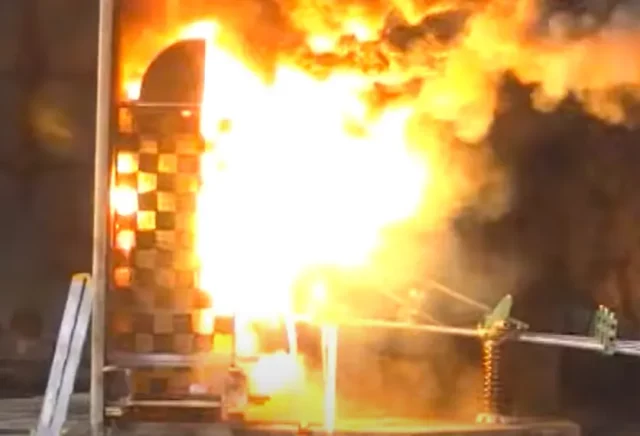Industrial power distribution system shall be designed to have an adequate protection from all short-cirruit. The maximum short-circuit current at any point of the system should be less than the short-circuit rating of the equipment applied at that point. When systems are designed, adequate short-circuit protertion is a necessity, in other words, the equipment are deemed to have adequate interrupting capacity (IC).
How can an Electrical Engineer be sure that a plant distribution system is adequate for all short-circuit conditions? Below are five (5) pointers to ensure system adequacy in all short-circuit conditons.
- Accurately determine the available short-circuit currents at all significant points in the system. Until the magnitude of short-cirruit current is known, it can not be assured that adequate short-circuit protection is provided.
- Install only short-circuit protective devices with adequate interrupting ratings.
- Prepare for load growth. If the system is installed with circuit breakers that are large enough only for present requirements, the cirruit breakers will become under-rated from a interrupting standpoint when capacity is added. The system should be designed and the circuit breakers should be selected on a hasis that will enable expansion without exceeding the circuit-breaker interrupting ratings. Short-circuit stresses must be checked too, as the stresses increase as the square of the short- circuit-magnitudes.
When new transformers were added to increase plant system capacity, the available short-circuit current is increased. This higher short-circuit current imposed added interrupting duty on the old circuit breakers when they were required to clear a faulty feeder cable. Often this added short-circuit current was sufficient to bring the total short-circuit current beyond the rating of those existing circuit breakers. However, through oversight nothing was done about it, leaving the plant vulnerable to a major shut-down if a fault occurred which one of these old circuit breakers failed to clear the fault. Failure to consider the effect of increased short-circuit currents has been one of the most common causes of many of the older installations being unsafe.
- Do not be complacent. Many systems which have been operating for years have never had a major short circuit. Operators of these systems have come to believe that short-circuits will never occur; so they do not bother about interrupting rating of circuit breakers. This belief com pares with the assumption that fire insurance is not necessary because the factory has never burned down. The older the system grows, the weaker the insulation becomes and the greater the possibility of major short-circuits. The circuit breakers too are often inadequate in these old systems. Thus, when a short circuit does occur it is almost certain to cause a major shutdown with possible damage to other property as well as loss of production.
- Use an engineering approach. If the short-circuit, protection problem is approached on an engineering basis instead of depending on good luck, the plant investment can be more adequately protected and undue risks eliminated. Good luck over a period of years may give a false assurance that failures are never going t,o occur, but, good luck eventually runs out as it has in so many cases. The cost of a loss due to a failure then is far more than it would have been to modernize the switchgear oil a planned step-by-step basis.
In the engineering approach a study is made to determine the weak spots in the electric system and remedy them hefore a major shutdown occurs, with attendant financial and production loss. The engineering approach is of a preventive nature, i.e. finding the weak spots and correct- ing them before a failure does occur.
Reference:
Industrial Power Systems Handbook
Donald Beeman
McGraw-Hill Book Company
ISBN-10 : 0070043019
ISBN-13 : 978-0070043015
